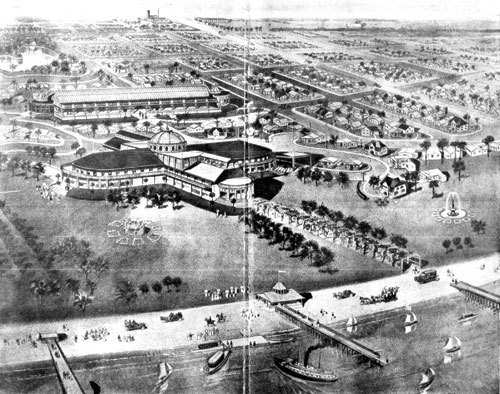The dog days of summer 2014 are finally past us, during days like this we should either be inside where it’s nice and cool or out on the bayfront, enjoying the warm coastal waters. I’d been thinking about what to write about for this next article and needed some inspiration so I headed over to the Calhoun County Museum. What better catalyst could I find only a mere five minutes from my house?
It’s bewildering how many of us have lived here for ten plus years but have never visited the museum. As I walked around I recognized several photos, artifacts, families and businesses but there were many which sparked numerous questions. I scribbled on my notebook things to ask George Anne Cormier, the museum’s director.
The Calhoun County Museum was established in 1964 by the Calhoun County Commissioner’s Court. Originally housed in the 1896 Jail building, it eventually moved to the Courthouse Annex Building and then to its present location. A photo of the Ribbon Cutting Ceremony which was held on November 1, 1991 greets you at the front entrance.
After studying all of the exhibits I was excited to speak with George Anne. It’s refreshing to talk with someone who is so passionate about our local history. Three hours later we were immersed in a deep conversation about Calhoun County — we talked about the mid-1800s to present day. I want to share with you several of the people and events we talked about which many of you may not be aware of.
One of my favorite aspects of learning about the area and history is being able to lose time asking questions and sharing little bits of history I’ve learned along the way. I often feel like a sleuth surrounded by an arsenal of reference books which hold the answers deep within their pages.
Angelina Belle Peyton Eberly, The Lady Cannoneer, an innkeeper and a hero of Austin, Texas.
In December 1842, Sam Houston ordered the secret removal of the archives of the Republic to safekeeping. Mrs. Eberly, realizing that the symbols of national government were being removed from the city, fired a six-pound cannon into the General Land Office Building, arousing the town to what they considered theft. The ensuing conflict became known as the Archive War, which was won by the Austinites, preserving Austin as capital of Texas and keeper of the archives. In April 1847 Angelina moved to Port Lavaca and operated Edward Clegg’s Tavern House. She then moved to Indianola and ran the American Hotel there until her death in 1860 at the age of 62. She is buried in the Indianola Cemetery, however her grave is unmarked.
Sutton-Taylor Feud
On March 11, 1874, William and Jim Taylor boarded the steamship Clinton, docked at Morgan’s Wharf and shot and killed William Sutton and Gabriel Slaughter. A reward was offered for the Taylor brothers and this started a manhunt that caused the death of Jim Taylor in a skirmish, in 1875, near the town of Clinton. Bill Taylor, however, was brought to trial twice.
Taylor escaped from the jail at Indianola on September 15, 1875, the day of the devastating hurricane. Records show that he was eventually captured and kept in jail in Galveston and brought to Indianola for trial. Eventually the charges were dropped and the Sutton-Taylor Feud became history. It is thought that he was released because it was too expensive to transport him to and from Indianola.
City of Port Lavaca Bankruptcy
The museum has several commemorative plates marking the celebration of the city’s founding. One plate from 1990 honors the city’s 150th birthday celebration even though the city went bankrupt in the early 1900s. The Port Lavaca city government functioned until November 1916, when the city went bankrupt. It incorporated again as a general-law city in November 1919. Why or how the city could have gone bankrupt was not defined. Both George Anne and I wondered as this area was incredibly popular.
Health Ranch
In the early 1900s there were Pleasure Piers built in each city which made up Calhoun County. The county’s motto included fishing, birding, beach combing and bathing. Politicians, legislators and prestigious families from all over the state would travel via the Southern Pacific Railroad and the San Antonio Mexican Gulf Railroad to visit our coastal community. Indianola was incorporated in 1846 and served as a major port. Some predicted it to supersede the Galveston port until it’s tragic destruction in the storm of September 1875. The locals had plans to build a health ranch (pictured in this article) in Alamo Beach to accommodate the growing population and tourists. People would be able to bask in the sun and lay in the water which residents believed was a powerful curative.
Dr. Frederick Jonathan Roemer
The Roemer family was incredibly influential in Upper Mott, Roemerville and Port Lavaca. Dr. Roemer owned the first automobile in Calhoun County and is credited to inventing the first heater for automobiles. The original patent is still in possession of his son, Dr. Ronald Roemer.
There are many other pieces of history I’d like to cover in upcoming articles. Until then I’d like to encourage you to visit the Calhoun County Museum, http://calhouncountymuseum.org and take in some of our local history. You never know, you might find me there!

